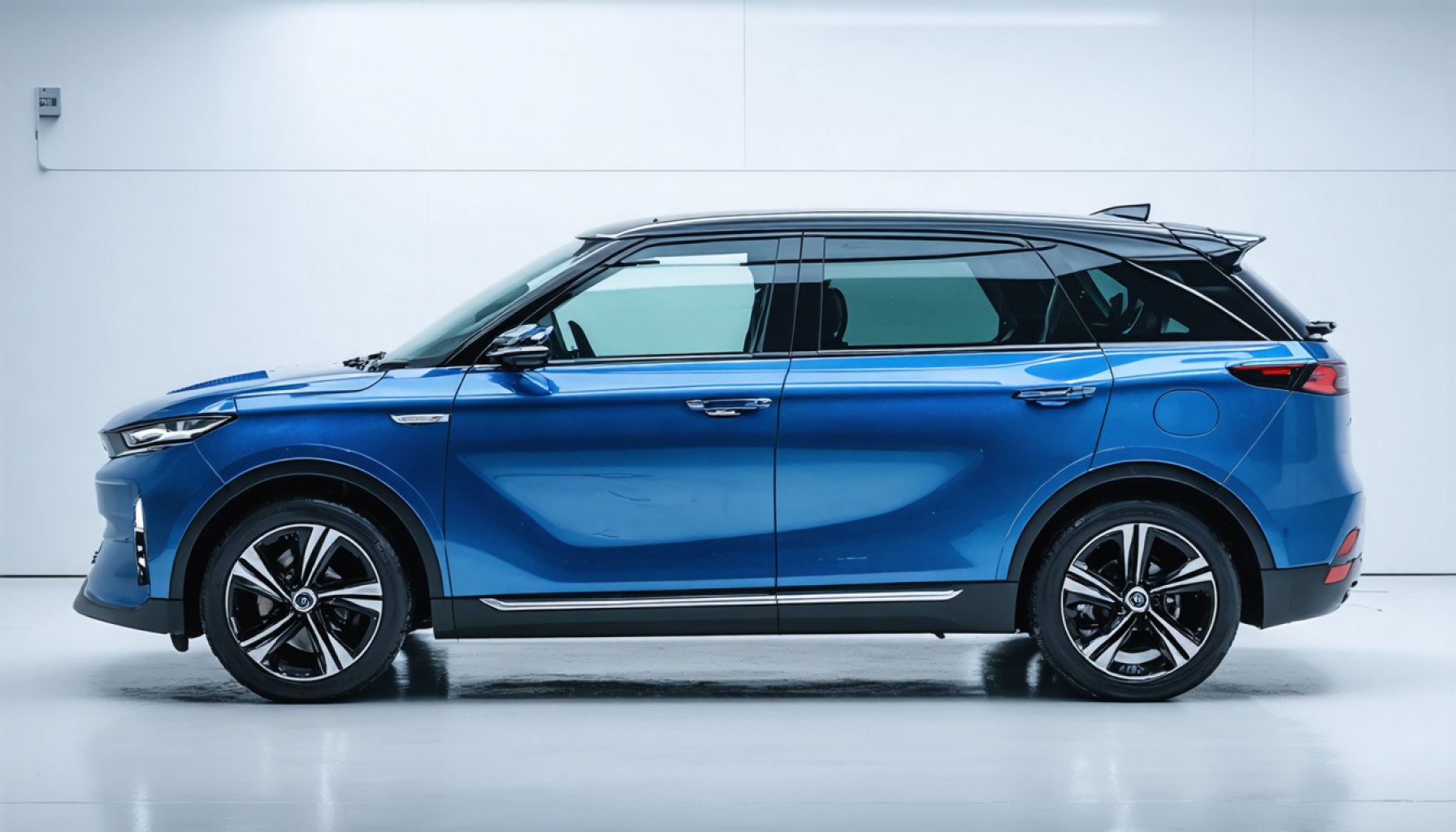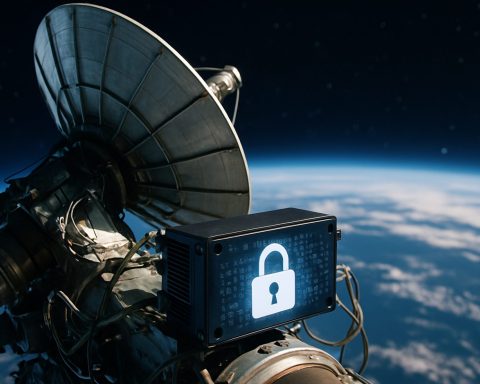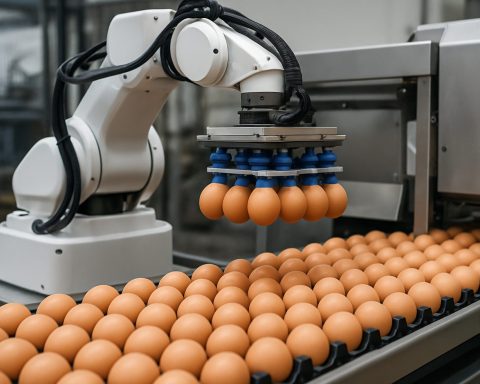- BYD introduces the revolutionary Blade Battery, challenging Tesla’s dominance in the EV market by 2025.
- The Blade Battery utilizes lithium iron phosphate (LFP) chemistry, emphasizing safety and affordability over Tesla’s nickel-manganese-cobalt (NMC) configuration.
- Key feature: BYD’s battery enables vehicles to achieve 400km range in a five-minute charge, surpassing Tesla’s Supercharger speeds.
- With a 160 Wh/kg energy density, the Blade Battery offers superior thermal management and efficiency, reducing energy losses compared to Tesla’s cells.
- Economically, BYD’s technology is about €10 per kWh cheaper, contributing to its larger global EV market share as of early 2025.
- Safety is enhanced with the LFP chemistry, minimizing risks like thermal runaway, proving robustness in testing scenarios.
- BYD’s innovation prompts a shift in the EV landscape, making electric vehicles more affordable and reliable, putting pressure on Tesla to innovate further.
A technological revolution simmers in the heart of the electric vehicle market, promising to reshape its future and challenge established hierarchies. As we steer into 2025, BYD, a leading Chinese automaker, has unleashed an astounding battery technology—the Blade Battery—that could dethrone Tesla’s years of dominance. This innovation, with its rapid charging capabilities and improved safety features, propels the electric vehicle industry into uncharted waters.
BYD’s groundbreaking Blade Battery signals a pivot in how electric vehicles will be powered in the coming years. In stark contrast to Tesla’s favored nickel-manganese-cobalt (NMC) configuration, BYD’s choice of lithium iron phosphate (LFP) chemistry in their prismatic cells puts safety and affordability at the forefront.
The Blade Battery offers an exhilarating experience for users concerned about the time spent tethered to charging stations. Abhik Mukherjee, a keen observer of the EV landscape, points out that BYD’s ultra-fast charging system redefines speed limits, allowing vehicles to accumulate an impressive 400km of range in a mere five-minute charge. This speeds past Tesla’s Supercharger, addressing a crucial consumer concern—longer charging times.
Beneath the hood, the specifications of BYD’s and Tesla’s batteries tell an illuminating story. The Blade Battery flaunts a 160 Wh/kg energy density and superior thermal management, offering both efficiency and safety. Tesla’s advanced 4680 cells, while boasting a higher energy density, rely on intricate cooling systems, making their operation less straightforward.
Data from RWTH Aachen University underscores the Blade Battery’s triumph over Tesla’s technology, exhibiting half the energy losses at identical C-rates. This leap in efficiency can likened to choosing a thrifty hybrid over a gas-guzzling sports car—they both reach their destination, but with differing ecological and economic footprints.
The economic implications are as far-reaching as they are profound. With a cost reduction hovering around €10 per kWh compared to Tesla’s versions, BYD offers a compelling financial narrative. This competitive edge saw BYD triumph over Tesla at the beginning of 2025, seizing the title of the largest globally recognized EV manufacturer.
Safety remains another strong suite for BYD. The LFP chemistry minimizes risks of thermal runaway and spontaneous combustion, promising enhanced sturdiness in crash scenarios. The robust performance in nail penetration tests underlines a commitment to vehicular safety rarely matched in the industry.
As BYD’s innovations ripple through the market, their wake compels fellow manufacturers to catch up or step aside. What was once a two-party race now morphs into a technological marathon, attracting investors and consumers alike with promises of improved vehicles and smarter choices.
For consumers, this escalating rivalry heralds an era of more affordable and superior electric vehicles, blurring the lines of conventional automotive boundaries. With BYD’s Blade Battery rewriting the rules, Tesla faces critical decisions—how to respond and realign in this fiercely competitive arena.
As spring 2025 unfolds, BYD is not merely challenging Tesla; they are redefining the paradigm of electric mobility. The spotlight shines blindingly on Tesla, prompting the question: Will their response sustain their preeminent status, or spark another ingenuitive shift in this electric odyssey?
The Game-Changer in Electric Mobility: How BYD’s Blade Battery is Redefining the EV Market
Introduction
The electric vehicle (EV) market is undergoing a profound transformation as new technologies emerge, challenging the status quo. One such innovation is BYD’s Blade Battery, which promises to revolutionize electric mobility. This development is significant as it shifts the dynamics within the EV industry, previously dominated by Tesla. As we explore this breakthrough, we will answer pressing questions and offer insights into what consumers and industry stakeholders can expect.
How BYD’s Blade Battery Stands Out
Key Features and Specifications
– Battery Chemistry: The Blade Battery uses lithium iron phosphate (LFP), offering enhanced safety and cost-effectiveness compared to Tesla’s nickel-manganese-cobalt (NMC) chemistry.
– Energy Density: The Blade Battery provides 160 Wh/kg, delivering optimal efficiency and robust thermal management.
– Charging Capabilities: It can achieve 400 km of range in just five minutes, outpacing Tesla’s Supercharger capabilities.
– Safety: With a focus on minimizing thermal runaway risks, it performs remarkably well in nail penetration tests, ensuring enhanced vehicle safety.
– Cost Efficiency: Reduced production costs by approximately €10 per kWh compared to Tesla’s offerings.
Real-World Use Cases and Industry Trends
With the increased adoption of Blade Battery technology, consumers can anticipate:
– Longer Range on a Quick Charge: Ideal for consumers who require fast charging without compromising range. Perfect for long-distance travelers and those with busy lifestyles.
– Eco-Friendly Transportation: The LFP chemistry’s safety features translate to a lower ecological impact, aligning with global sustainability trends.
– Market Penetration: As BYD enhances affordability, they are likely to increase their market share, pushing other manufacturers towards innovating lower-cost solutions.
Reviews & Comparisons
Industry experts and consumers generally praise the Blade Battery for:
– Safety and Reliability: Its improved thermal management and reduced risk of combustion highlight its appeal for safety-conscious buyers.
– Economic Value: Competitive pricing allows for a broader market reach, capturing the interest of budget-conscious consumers.
– Performance: While Tesla’s 4680 cells boast higher energy densities, the Blade Battery’s balance of efficiency, safety, and cost is a compelling proposition.
Controversies & Limitations
No technological breakthrough is without its challenges:
– Energy Density Limitations: Compared to Tesla’s NMC cells, the Blade Battery’s energy density is slightly lower, which might affect power-hungry applications like high-performance vehicles.
– Global Adoption: While promising, the widespread implementation of Blade Battery technology will depend on infrastructure development and regional regulatory support.
Market Forecasts and Insights
– Growth Predictions: Analysts forecast that as demand for safe, affordable EVs grows, BYD will continue to capture a larger market share, potentially reshaping global automotive hierarchies.
– Investor Interest: The Blade Battery may attract increased investments in BYD, pushing competitors to develop alternative technologies or partnerships.
Actionable Recommendations for Consumers
– Evaluate Your Needs: Determine if the balance of range, cost, and safety offered by LFP technology fits your driving habits and budget.
– Stay Informed on Trends: Keep an eye on industry news to follow developments in battery technology, charging infrastructure, and new vehicle releases.
– Consider Value Over Brand: As more players enter the EV space, weigh the benefits of different technologies beyond brand allegiance.
For more information on electric vehicles and innovations in battery technology, visit BYD or Tesla.
Conclusion
BYD’s Blade Battery marks a pivotal moment in the EV industry, challenging Tesla’s longstanding dominance. This innovation not only addresses key consumer concerns about charging times and safety but also pushes the boundaries of what electric vehicles can offer. As the industry evolves, consumers stand to benefit from more choices, better technology, and competitive pricing. For those closely following the EV revolution, staying informed will be key to making the most of this rapidly changing landscape.







